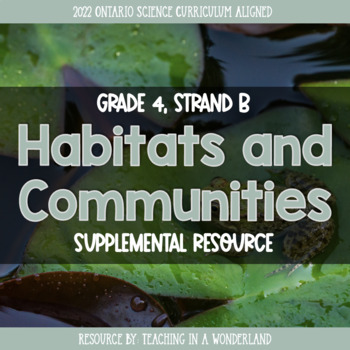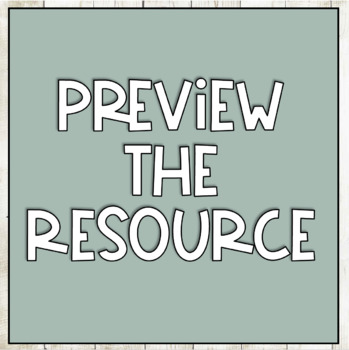Grade 4, Strand B: Habitats and Communities (Ontario Science)
- PDF
What educators are saying
Description
The Grade 4, Strand B: Habitats and Communities supplemental resource is aligned with the Ontario 2022 Science curriculum expectations. This resource features 11 three-part lessons as well as activities, readings, and assessments.
About the Resource
A large portion of this resource is based off having students develop an understanding of what habitats are and what habitats provide for living things as well as what communities are. Students also explore food chains and identify how food webs can help us to better understand the resources that need to be present in each animals’ habitat.
To aid in students’ understanding of habitats and communities, students also explore how animals are classified based on their diet and explore the structural adaptations of plants and animals. Students also choose a habitat and explore the types of plants or animals found within the habitat.
The goal of this science resource, as well as others, is to ensure students can see the real-life application of what they are learning. Students explore the positive and negative impacts of human activities on habitats and communities. Students also explore the impact of depletion and extinction of a specifics on its habitat and community. Students use this knowledge to identify how we, as humans, can help to care for habitats and communities in order to prevent such depletions or extinctions.
Experiments and Hands-On Activities
Due to the nature of this resource, there are no hands-on activities or experiments included. Students are asked to observe a habitat around them, but the general purpose of this resource is for students to explore habitats, what can be found in habitats and the impact that our activities have on habitats.
Student-Led Assignment
Students are asked to choose a habitat and explore the basic aspects of the habitat (e.g., location, weather, plant and animal life, food chains, structural adaptations, impact of human activities - both positive and negative, and three interesting facts about the habitat). Students will be presenting about their habitat at the end of the unit and can complete a formal presentation with a PowerPoint or an oral presentation. There is a short rubric for this assignment.
Please be sure to view the preview of this resource for sample lessons and activities to see if this resource is the right fit for you and your students. There is no digital component included.
Lessons Included
The lessons included in this resource are meant to guide your unit. You can pick and choose the components to use or use the resource as is. The lessons included are as follows:
- Lesson B1: Introducing the Unit
- Lesson B2: What is a Habitat?
- Lesson B3: What is a Community?
- Lesson B4: Food Chains
- Lesson B5: Food Webs
- Lesson B6: Structural Adaptations
- Lesson B7: Carrying Capacity
- Lesson B8: Invasive Species
- Lesson B9: How Humans Use Habitats
- Lesson B10: Depletion and Extinction
- Lesson B11: Issues Affecting Habitats
Components of the Resource
The following components are included in the resource:
- 25 printable activity pages
- 11 lessons
- 11 term definition posters
- 10 science chats
- 5 readings
- 3 self-assessments
- 3 small-group question cards
- 3 success criteria checklist
- 2 exit cards
- 1 assignment
- 1 rubric
Links are provided for additional online information that students can view or use to help them explore the topic of each lesson.
Frequently Asked Questions
How are the activities and readings numbered?
Each activity and reading is numbered based on the lesson it corresponds with and the placement of the activity or reading in the lesson. For example, Activity B1.1 would align with lesson B1 and is the first activity in the lesson. Similarly, Activity B1.2 would also align with Lesson B1 and be the second activity for the lesson.
Are there answer keys provided?
There are some answer keys provided. For some activities there are no answer keys provided due to the open-ended questions students are asked. This means that there is not one correct answer and it is up to you to determine whether the student has demonstrated an understanding.
Version
Version 1.0
Terms of Use
This product is licensed for personal classroom use ONLY unless multiple licenses are purchased.
© Teaching in a Wonderland




